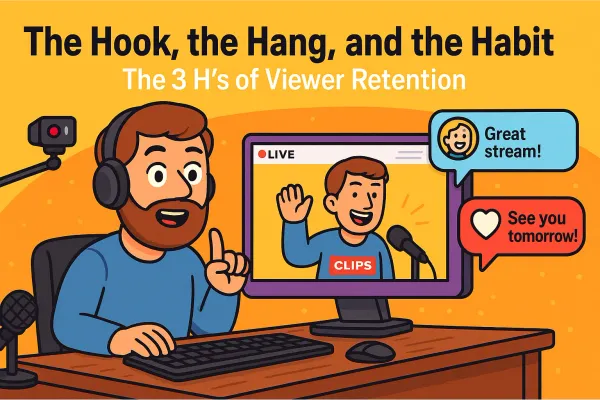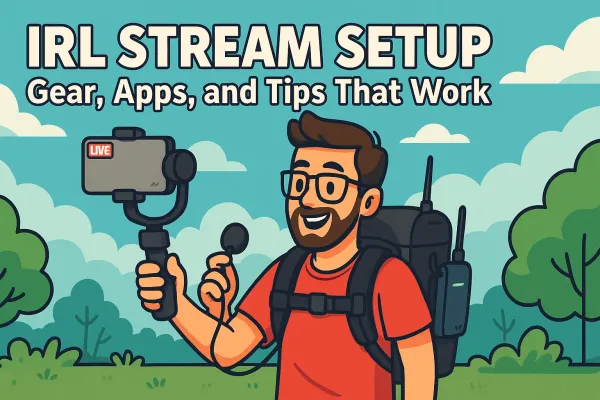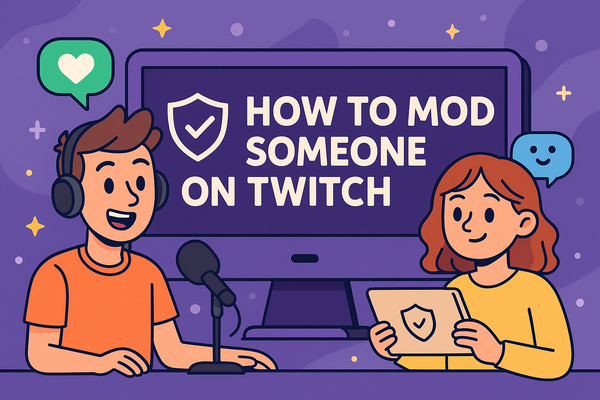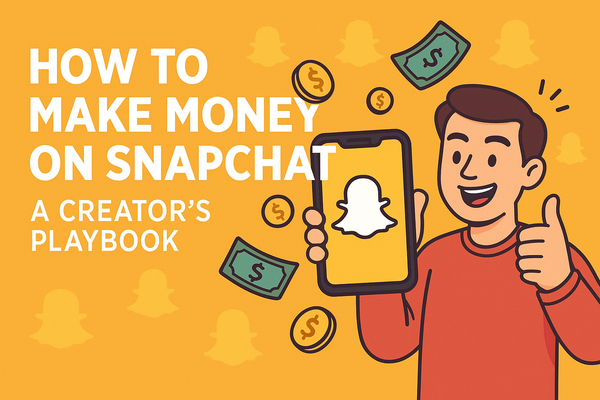Why Streamers Need a Content Calendar
Waiting for motivation is a trap. If you're serious about streaming, you need a content calendar. This post breaks down how planning beats procrastination and shows you how to build a flexible schedule that actually helps you grow.
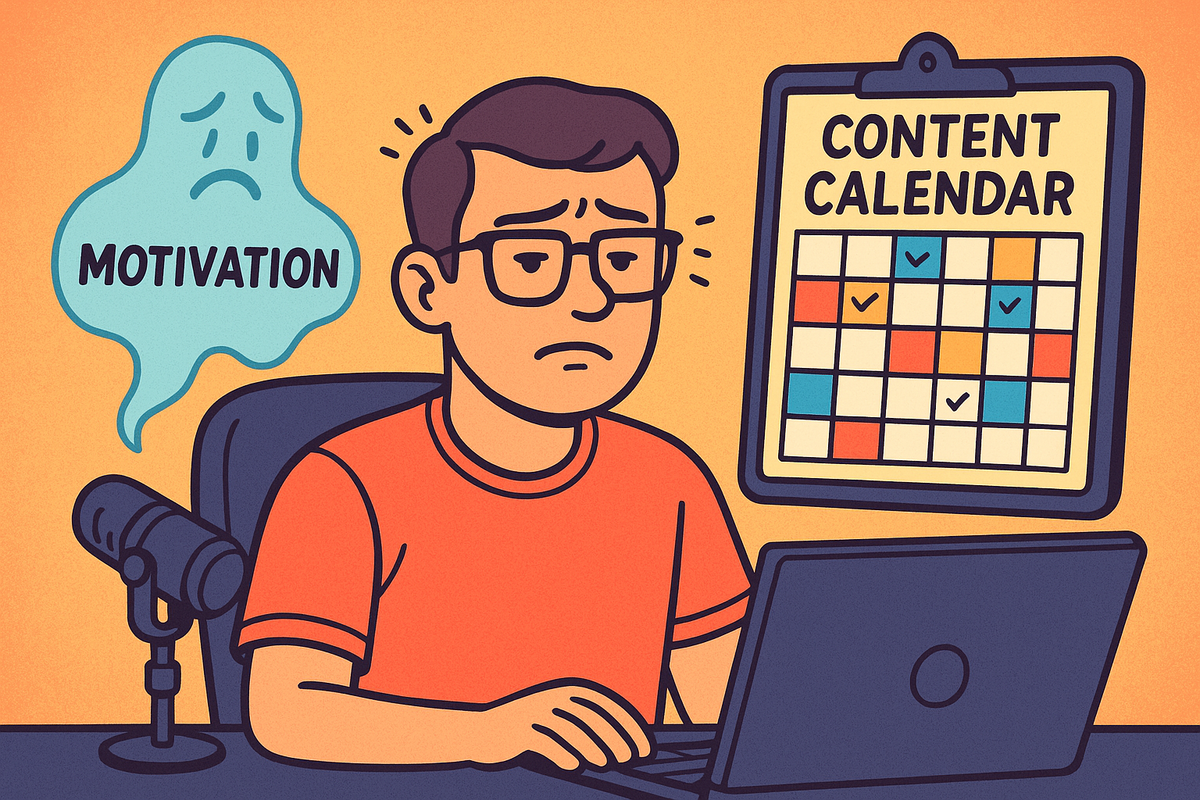
Ever sit around waiting for motivation to strike? How’s that working out? You probably got one video half-scripted, three ideas scribbled in a notes app, and a mounting sense of guilt every time you open TikTok.
Here’s the deal: motivation is flaky. Shows up late, leaves early, and never pays off. Waiting to feel inspired is the fastest way to stay stuck. The truth is, the creators who seem endlessly productive aren’t superhuman... they’re just organized. They don’t wait for the muse to show up. They build systems that don’t care how tired or uninspired they feel.
Enter the unsung hero of consistent content creation: the content calendar. Not sexy. Not magical. But it works like a beast.
Motivation is Fleeting, Schedules Are Strategy
Here’s the hard truth: motivation is a mood. It comes and goes like a Wi-Fi signal in the middle of a livestream. Some days you’re on fire, other days you’re just staring at your gear wondering if anyone will notice if you don't show up. That’s why relying on motivation is a losing strategy.

Professional creators don’t wake up every morning bursting with inspiration and perfectly styled lighting. They treat content like a job, not a pray and spray side hustle. There are schedules, deadlines, and systems. It’s not about how they feel, it’s about what’s planned.
If it’s not on a schedule, it’s not real. Want to post three times a week? Cool.
What days?
What topics?
What platforms?
If you can’t answer those without opening your phone and winging it, then you don’t have a content strategy; you're hoping for a lottery ticket.
A content calendar turns "I should post more" into "I know exactly what’s going out next Thursday." That’s the kind of clarity that kills procrastination.
What a Content Calendar Actually Does For You
Let’s break down what a content calendar really gives you, because it’s not just a pretty spreadsheet with pastel colors. Its about staying sane, keeping the viewers (and the algorithm happy) and scaling up.
1. Keeps You Organized
You ever wake up and think, “What the hell am I supposed to post today?” That’s a bad place to live. A content calendar lays it all out. You know what’s coming up, what needs filming, what’s being edited, and when it goes live. No more scrambling, no more panic-posting last year’s blooper reel just to stay active.
2. Reduces Decision Fatigue
Creative energy is real, but it’s limited. And if you’re using 60% of it every day just to figure out what to make, you’re running in place. A calendar removes the guesswork. On Tuesday, you make tutorials. On Friday, it’s behind-the-scenes. Done. Less mental noise = more fun, more creative output, which in turn = happier viewers.
3. Builds Consistency
Social platforms love consistency like a dog loves peanut butter. Whether it’s YouTube, TikTok, Twitch, or Instagram, regular posting keeps you in the algorithm’s good graces, and in your audience’s feed. A calendar helps you maintain that rhythm without burning out or ghosting your followers for two weeks.
4. Gives You Creative Runway
When you’re not scrambling for what to post, you can actually plan ahead. Want to run a spooky series in October? Tease a big collab next month? Or build toward a product drop? You can map all that out with room to breathe. Your ideas get sharper, your themes get stronger, and your content starts to feel intentional.
How to Build a Basic Content Calendar
Alright, let’s talk. Making a content calendar sounds like one of those things people say they’re doing while making mental notes about what to play later. But it doesn’t have to be complicated, you just need to start. Here’s how to build one without spiraling into planner hell:
1. Choose Your Tool
Google Calendar? Great.
Trello? Sure.
Notion? Knock yourself out.
Whiteboard, Excel sheet, a napkin taped to your wall... seriously, use whatever you’ll actually look at. The tool doesn’t matter as much as using it consistently.
2. Start With Your Stream Pillars
Pick 3–5 stream “types” you’ll rotate through. These are your content pillars, the backbone of your calendar. Think:
- Chill Just Chatting sessions
- Game nights (specific titles or genres)
- Tech/tool/game reviews live
- Creative builds
- Tutorials
- News discussion (politics, tech, game release, celebrity... doesn't matter)
- AMA or “Ask Me Anything” streams
You don’t have to do everything. Just pick formats that suit you and your audience.
3. Plug in Weekly Slots
Decide when you’re streaming, and assign your pillar types to specific days. Example:
- Monday: Gaming or IRL
- Wednesday: Co-op with friends
- Friday: Chill Chat & Recap
This takes the “what should I stream tonight?” stress out of your brain and puts it on the calendar; where it belongs.
4. Add Prep Milestones
Even live streams need prep. Add internal deadlines for each stream type:
- Topic selection or game choice
- Graphics, overlays, alerts
- Guest confirmations
- Testing your gear (yes, even if it worked last week and especially when there are multiple streamers involved)
- Jokes or stories you want to tell
- Promo posts: schedule tweets, stories, or Discord pings
You don’t want to go live and realize your mic’s been muted for 20 minutes. Again. - Post stream posts - get those clips circulating!
You can’t batch live shows, but you can batch everything around them. Plan your stream titles, alerts, thumbnail graphics, and promos all at once for the week ahead. Or if you're making evergreen videos, Film 3–5 pieces in one go while your lighting is set and your brain is in performance mode.
Your content calendar is nothing more than a map. And when you’re streaming consistently, that map leads to better engagement, more growth, and way less pre-stream panic.
Make It Flexible, Not Fragile
Now, your content calendar is a guide, not a blood pact. It’s not carved into the walls. It’s a living document, and it should flex with you not fight you.
Things will come up. Twitch might drop a new feature. A game you’ve been waiting for finally drops. Some wild trend explodes overnight and your chat needs to hear your take on it.
Cool! Make room for it.
I've had podcast guests stuck in tornados with shaky internet, and have missed planes for live-panels. Your calendar should support those pivots, not block them. You can make anything work, and more importantly you can turn anything into even greater content, if you can stay calm and understand that your viewers are there for the journey!
Don’t get so locked into “the plan” that you miss out on momentum. Leave buffer days or flex slots for reactive streams, collabs, or “I just feel like streaming this weird thing” content. Audiences love a little unpredictability, as long as it still feels like you.
And once a month? Sit down and audit the whole thing. Ask:
- What streams felt great? and had the most viewership?
- What totally flopped?
- What’s burning me out?
- What’s driving engagement?
Kill the stuff that’s not working. Double down on what is. And adjust the calendar accordingly. It’s not a failure to switch things up... it’s called strategy.
The Compound Effect of Planning
Here’s where the magic happens. When you stick with a content calendar, even a basic one, you unlock something powerful: compound results. It helps you build momentum that pays off over time.
Consistency = Trust = Growth
When you show up regularly, your audience learns to expect you. That’s huge. People don’t just stumble into random streams; they return to creators they can rely on. Whether it’s “every Monday at 8PM” or “Tuesdays and Thursdays no matter what,” consistency builds trust. And trust builds communities.
Planning Clears Room for Actual Creativity
When you’re not constantly scrambling to figure out what you’re doing 30 minutes before you go live, your brain is free to create. You can think bigger. Plan series. Build bits. Develop running jokes or themes. Engage your chat more deeply. You’re producing instead of getting stuck in survival mode.
And Let’s Be Real, You’ll Look Like a Pro
Even if you’re running on fumes and microwaved noodles, having a plan in place makes you look like you’ve got it all together. Your overlays are on point, your stream titles hit, your content flows. And that kind of polish stands out in a sea of amateur streams.
The longer you stick to your calendar, the smoother your process gets. The more content you create, the more feedback you get. And the better you get, the more your audience grows. Planning just snowballs in your favor.
At the end of the day, waiting around for motivation is just procrastination. If you want to grow as a streamer, if you want to build a real audience and make content that actually lands, then you can’t rely on vibes alone.
You have to show up.
Even when you don’t feel like it.
That’s the difference between a hobbyist and a creator. One hopes they’ll be “in the mood.” The other builds systems that don’t care about moods.
Motivation is for amateurs. Calendars are for creators.
You’ll be amazed at how much smoother, easier, and more professional your whole workflow feels.


